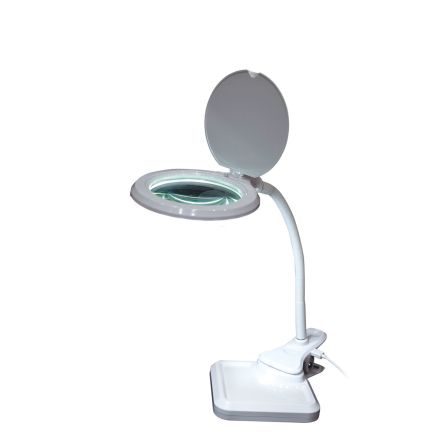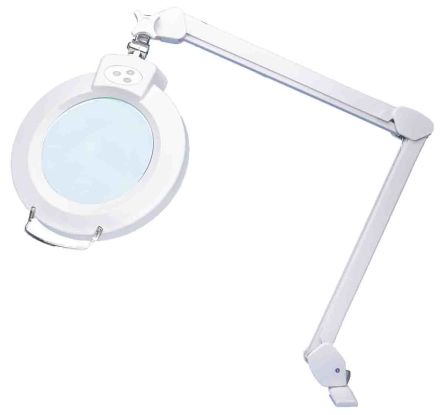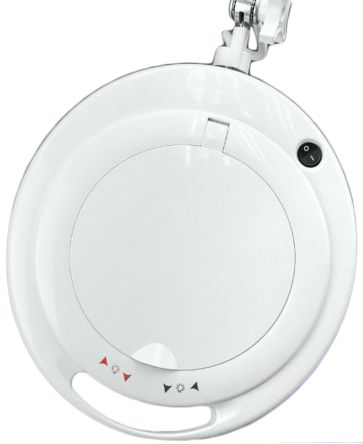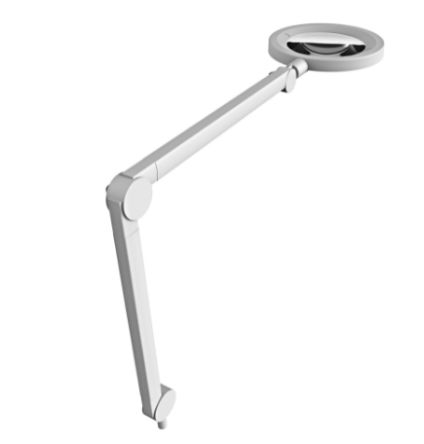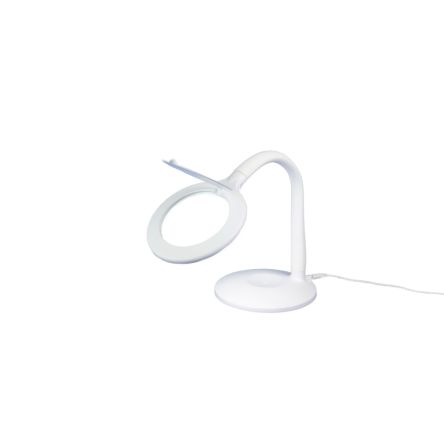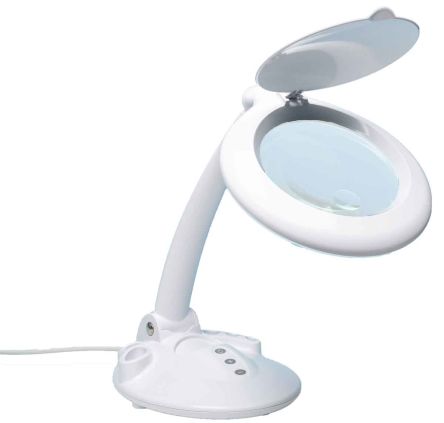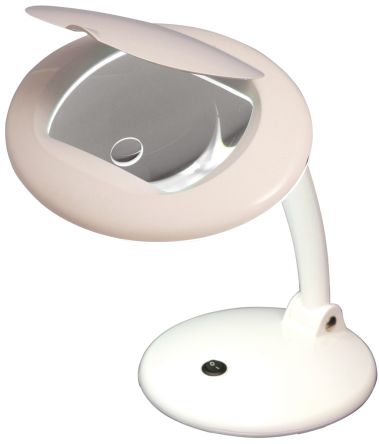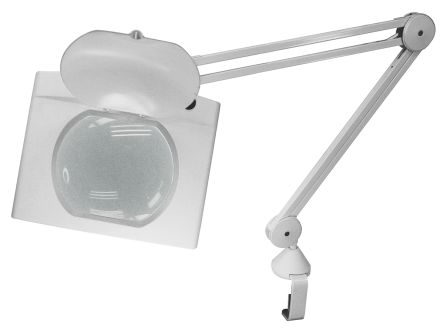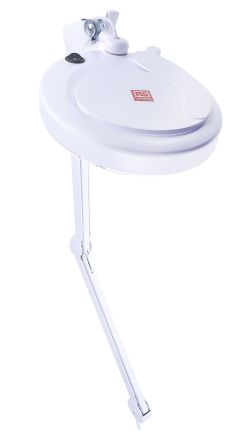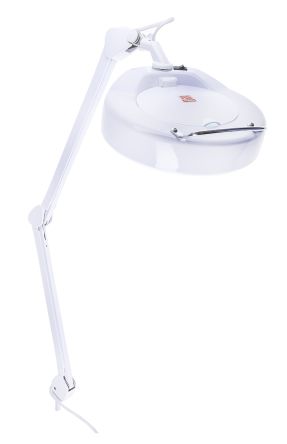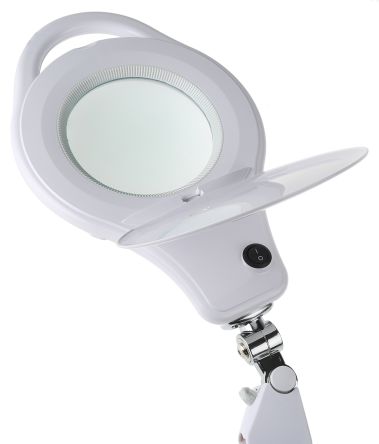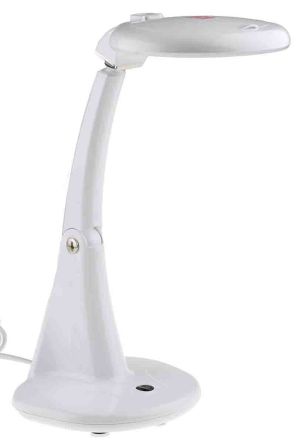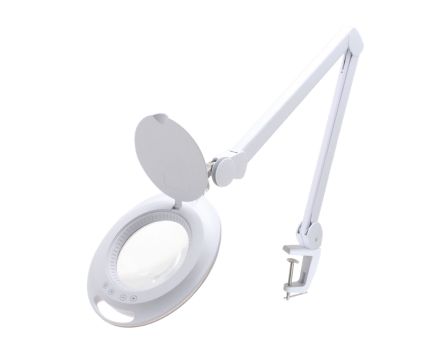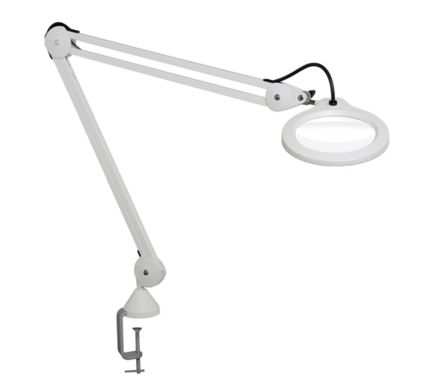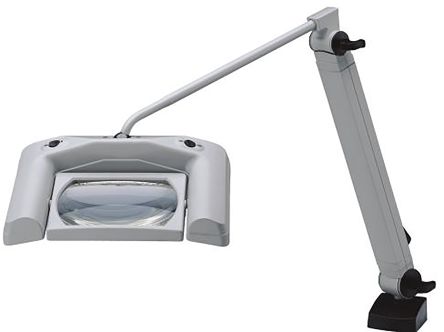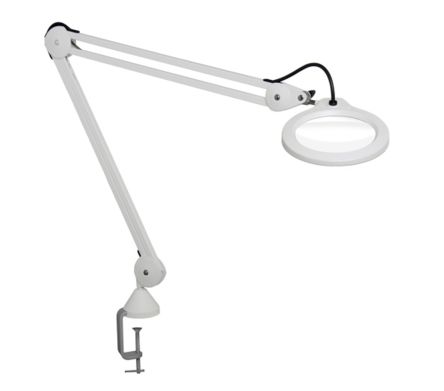- Automation & Control Gear
- Cables & Wires
- Enclosures & Server Racks
- Fuses & Circuit Breakers
- HVAC, Fans & Thermal Management
- Lighting
- Relays & Signal Conditioning
- Switches
- Batteries & Chargers
- Connectors
- Displays & Optoelectronics
- ESD Control, Cleanroom & PCB Prototyping
- Passive Components
- Power Supplies & Transformers
- Raspberry Pi, Arduino, ROCK, STEM Education & Development Tools
- Semiconductors
Magnifying Lamps
Magnifying lamps are used for close up inspection, design or small part assembly work with added illumination for optimal visibility. A magnifier lamp enables the user to effortlessly see exactly what they are doing in intricate detail due to the combination of magnification and light, reducing the risk of eye strain and vision fatigue.
Magnifying lamps are commonly used in a wide variety of applications that require detailed, intricate work that may be completed on a very small scale, such as:
- Electronics, including circuitry, circuit or motherboards and component installation
- Medical and Dentistry Fields
- Jewellers and watch makers or repairers
- Office environments that carry out intensive inspection or detail-oriented work
- Arts and crafts, including paper cutting, metalwork and intricate design
There are different types of lamp magnifiers: floor lamps or floor-stand, desk lamps, table top lamps, magnifying glasses and even headband magnifiers. Some of these are swing arm lamps which either clamp or clip onto a desk or table using the built-in clamp and are then easily adjusted to the correct height. Other magnifying lamps are more compact with an integral base and are portable.
What does diopter mean?
Diopter refers to the curvature of a lens, with a higher diopter meaning there will be more curve and also a greater thickness to the lens. Most simple magnifiers have a single 4-6 diopter lens, but different focal lengths are available. Focal length refers to the distance from the lens at which an object can be placed and be in focus. Various sizes of lenses are available, however the increase in the size of the lens does not mean an increase in magnification. Many of these magnifying lamps have a fully adjustable arm which means the lamp head with magnifier can be moved into the required position.
What are the benefits of a magnifying lamp with a light?
Good lighting is essential to any task, whether you are working in daylight, an enclosed space with no natural light or when it is dark outside (weather, night time, etc). As well as reducing eye strain and vision fatigue, good illumination combined with a magnifier ensures optimum viewing for the task in hand. A magnifying lamp with a light usually has either fluorescent, halogen or LED bulbs or tubes and offers a shadow-free, consistent light, with low heat emission for comfortable working.
